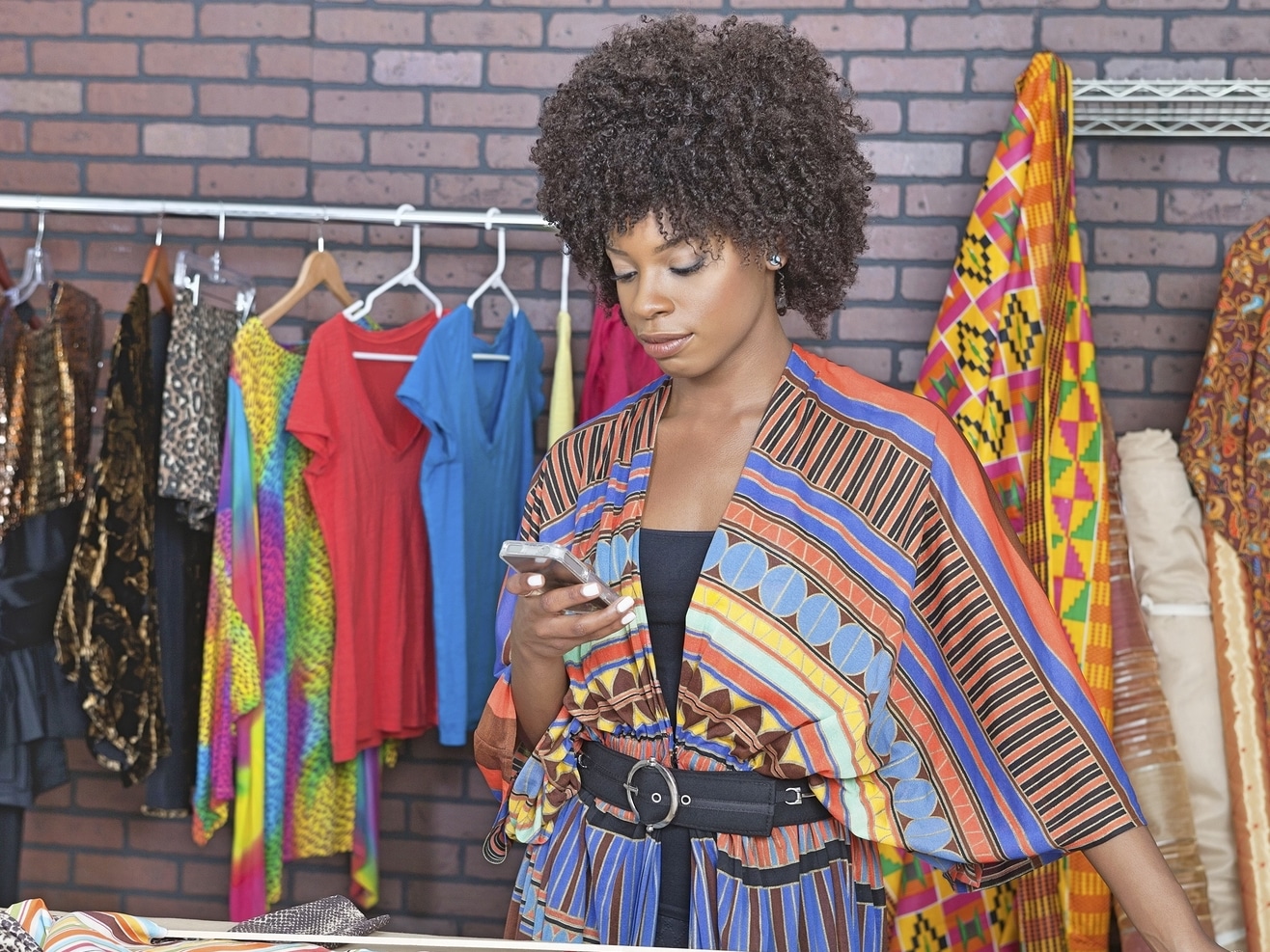Using mobile in-store to research products has become a regular part of the brick-and-mortar shopping experience. These days, the consumer’s smartphone is a digital sales assistant that helps guide them through the purchase process as they’re in the shopping aisle. This kind of mobile use presents an opportunity for brands to gain the consumer’s attention during those critical moments just before a purchase decision. As more shoppers use mobile in-store, brands should adjust their marketing campaigns to capitalize on the trend.
Consumers now recognize that mobile shopping isn’t limited to making purchases online. They can use their phones to research products—including while they’re in the store—check product availability, and get all the information they’d usually depend on a salesperson to provide. This benefits the consumers, as it helps make them more informed shoppers. It also helps brands, as it gives them an additional opportunity to make an impression on the consumers prior to the purchase decision.
How Consumers Are Using Mobile As Virtual Sales Assistants
While only 35% of consumers are willing to seek out a sales assistant in the store when they have a question about a product, 77% will gladly turn to a mobile device for the information they need. The disparity between these numbers is easy to understand: Smartphone searches offer some benefits sales assistants can’t, such as:
- No waiting: While a consumer may have to locate, and wait for, a sales assistant to answer a question, answers from a smartphone search are right at their fingertips.
- Better product information: Salespeople are only human so answering questions about ingredients, pricing, and availability will likely require additional research. Smartphones, on the other hand, can provide exact, up-to-date information.
- Unbiased comparison shopping: Comparison shopping is now a significant part of the path to purchase, and 91% of shoppers report they research products online before buying at a physical location. Consumers want to be able to compare the products they’re considering in order to make better, more informed decisions. Smartphones typically offer the most convenient way to accomplish this.
Shoppers using mobile apps in the store is a trend brands need to be aware of, and one they should leverage for sales. By offering the information the consumer needs via a mobile app, brands can increase their chances of a sale in brick-and-mortar locations. While mobile is essential to consumers seeking information on products, it also offers a benefit to brands: the ability to incentivize in-store sales via a rewards program.
Using Shopping Apps to Reward Shoppers Using Mobile In-Store
While mobile app marketing strategies are a crucial part of getting shopper’s attention, brands are often challenged by app adoption. Convincing consumers to download a new app is not an easy feat, and 77% of consumers report they only download apps from brands they trust. If a brand doesn’t have an existing relationship with a consumer, it’s unlikely they’ll get that shopper to download their app. This is where third-party apps can benefit brands, and help them reach new audiences.
Shopkick is a good example of a shopping app that successfully helps brands engage consumers using mobile in-store. Shopkick partners with retailers and brands to offer reward points for, among other things, product engagement in-store. Consumers use the app to scan items to collect points. Shoppers can earn even more rewards when they scan receipts showing the purchase of an eligible product. These points can then be redeemed for gift cards to a variety of stores.
Shopping apps allow brands to pinpoint their audience at the moment of purchase, making marketing more impactful.
This tiered reward model incentivizes purchases and encourages full-funnel engagement. Shopping apps can be an excellent tool for enhancing in-store sales as they offer:
- High perception of reward value: The consumer’s perception of the value of rewards points is often higher than the actual dollar amount. Rewards points also offer significant emotional return.
- Improved product visibility: When a consumer scans an item in the store, they have actively sought out the brand and product on the shelves and are interacting with that product in a meaningful way. While the shopper may not make an immediate purchase, the interaction improves the likelihood that that consumer will remember the brand for a future purchase. And, since they already know where the brand is located in the store, the consumer is more likely to return to that section.
- Access to decision makers: Third-party shopping apps appeal to individuals who do a lot of shopping, whether those individuals are seeking out rewards, finding new products, or enjoying tech-enabled shopping. These shopping apps, by their very nature, appeal to the shopping decision makers in a given household because they are designed for both online and physical shopping. As a result, brands can gain access to shopping decision makers by partnering with third-party shopping apps.
- In-the-moment targeting: Advertising through shopping apps allows brands to connect with consumers specifically while they are in the shopping aisle, as this is where the app is designed to be used. Shopping apps allow brands to pinpoint their audience at the moment of purchase, making marketing more impactful.
Shopping apps allow brands to connect with consumers as they shop, incentivize sales, and help direct shoppers down the path to purchase. Shopping apps also give brands access to a built-in audience, which can expand and improve a product’s reach.
Brands can leverage mobile in-store to deliver one last marketing touch in the final moments of purchase decision-making. A shopping app can help brands connect with consumers through incentivized programs that encourage in-store interaction with products. By connecting with consumers as they’re in the buying mindset, brands can build a relationship with consumers, which can improve sales and, by extension, market share.
Shopkick offers our partners the opportunity to leverage mobile moments with consumers via an innovative shopping app. For more information on our program, contact us.
Image courtesy of Nosnibor137




